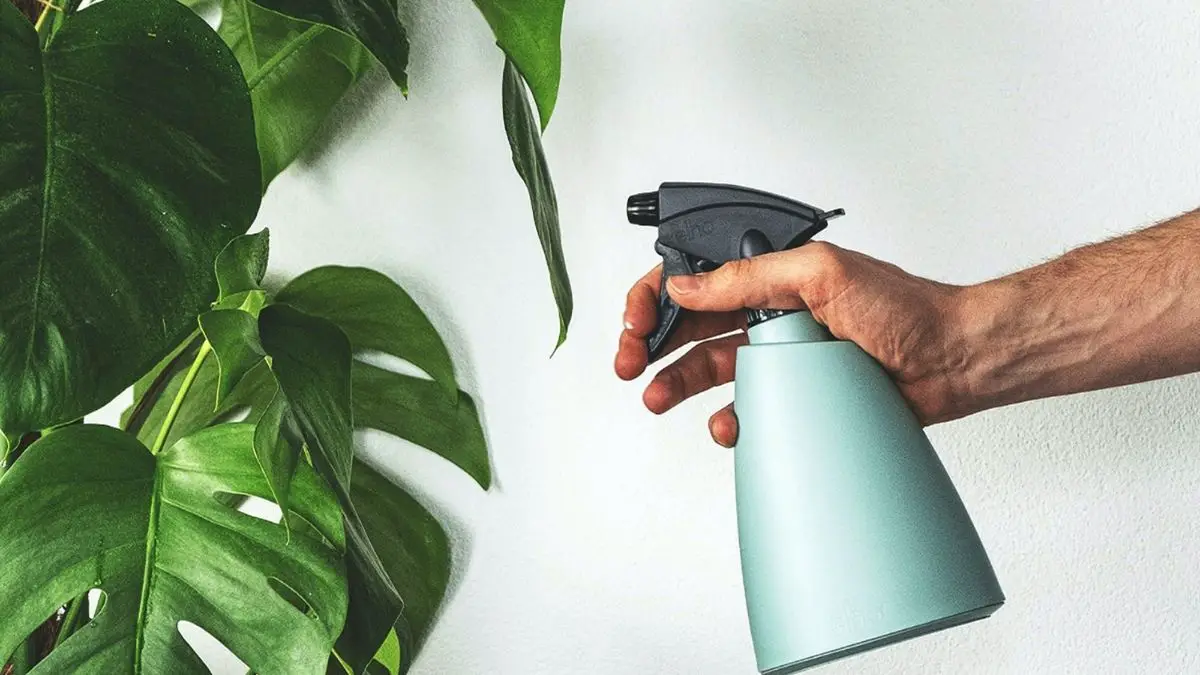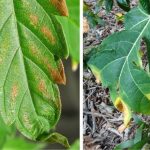Protect Your Plants with Hydrogen Peroxide Foliar Spray. Read How

Hydrogen Peroxide is one of the best things for us. Normally, we apply Hydrogen Peroxide on our minor cuts and scrapes. But did you know we can also use Hydrogen peroxide to treat plants as well? Yep, No kidding, you read that right. Hydrogen Peroxide Foliar Spray is cheap and available in almost every drug store can protect your garden from many “harmful things.” But wait, before buying it, read all the details we are providing you about it.
To increase your amazement, you can also use baking soda and Epsom salt as well in your garden. Stay with us as we explain how we use them and why hydrogen peroxide is a blessing for gardeners.
Hydrogen Peroxide in Gardening
Hydrogen Peroxide Is a plant’s best mate when it comes to gardening. People often wonder Is hydrogen peroxide safe to spray on plants? Absolutely Yes! Hydrogen peroxide is safe for humans and thankfully bad for pests.
We know you may have hard some cases of hydrogen peroxide burn, but that’s due to gardeners own misinformation. Excess of everything is bad which also includes the excess of hydrogen peroxide. If you add hydrogen peroxide more than the recommended amount, then it will definitely cause some damage. But, if you dilute the hydrogen peroxide with the recommended amount of water, then it will cause humans no harm. Yet, it will still cause the deaths of pests.
Why You Should Consider Hydrogen Peroxide Foliar Spray?
Using hydrogen peroxide foliar spray is a win-win situation as you get rid of insects and you don’t even have to spend much amount for it.
Hydrogen Peroxide foliar spray is used for the following:
1) The major responsibility of Hydrogen Peroxide is Pest Control. It protects the plant from the attack of sap-sucking insects like Aphids, mealybugs, and mites. Moreover, it can also kill the larvae of moths with its strong oxidization.
2) To treat Root rot so that water and nutrient uptake go smoothly.
3) To Kill Fungus which causes powdery mildew in plants.
4) To treat seeds before sowing to prevent infection.
5) When Hydrogen Peroxide is added to the soil, it promotes extra root growth due to an extra oxygen molecule. The Hydrogen Peroxide formula is H2O2 which I very similar to water (H2O) but with an extra oxygen atom. This proves to be a blessing for roots as it helps in more nutrient uptake.
6) You can use Hydrogen Peroxide foliar spray to disinfect gardening tools. Clean gardening tools are necessary to carry out healthy gardening practices. Your tools, especially spades, can have germs, eggs of insects, fungi. Such tools can become carriers of future diseases. To avoid this, Hydrogen peroxide foliar spray comes to the rescue. So, make a habit to regularly clean them regularly for efficient gardening.
7) Hydrogen Peroxide Foliar Spray is environmentally friendly and is gaining importance as it could potentially replace chemical pesticides.
In Markets, Hydrogen peroxide is available in 3 %, 6 %, and even in 35 %

How to make Hydrogen Peroxide Foliar Spray?
Want to know the hydrogen peroxide foliar spray recipe. Then read it carefully and if you have a pen, then note it down.
Generally, we make a 3 percent solution of hydrogen peroxide. The ratio spray is 1 teaspoon (5 ml) per cup (240 ml). Spray on the whole plant to get the desired results. It is an excellent insecticide to kill insects. Moreover, this spray composition is also effective in treating seeds before sowing.
To treat fungus and root rot, add 15 ml hydrogen peroxide to a cup. Below we are discussing three Hydrogen Peroxide Foliar Spray in detail!
Precaution: Add Hydrogen peroxide into the water and never ad water into the hydrogen peroxide. IF you are adding water peroxide into the water, then it may spill and fall on your skin. And if it does, then your skin will burn. So, be careful and follow precautions. Add solution into the water and not water into the solution. Also, store Hydrogen Peroxide Foliar spray in a cool environment and protect it from the light.
3 Hydrogen Peroxide Foliar Spray
Hydrogen peroxide is available in 3%, 6%, and 35 %. 3 and 6 percent are easily available in stores while 35 percent are not that common in stores. We can make 3 hydrogen peroxide foliar sprays. We use different Hydrogen Peroxide foliar Spray Ratio varies according to our needs.
3 Percent Hydrogen Peroxide Spray
Use two cups of 3 Percent H2O2 per liter of water and add it to the spray bottle. We make this spray if we have plants fewer than 50 and the attack of insects or fungi is not that severe. If it is severe or plants are more than 50, then it is better to use 6 percent Hydrogen Peroxide.
6 Percent Hydrogen Peroxide Spray
You can make a spray of 6 Percent Hydrogen Peroxide as well depending upon the situation. Add 1 cup of 6 Percent Hydrogen Peroxide (H2O2) in a liter of water and then pour it into the spray bottle. Spray it directly on the plants to get rid of “tiny devil creatures.” Adopt this step only if you have 100 plants or if the attack is severe.
35 Percent Hydrogen Peroxide Spray
If you are growing plants in a large area, then 35 percent hydrogen peroxide is preferred. The ratio of this H2O2 solution is 1:10. Add one part of 35 % Hydrogen Peroxide with 10 parts of water. 35 Percent Hydrogen PEroxide is not easily available as compared to the other two percentages. You can found it on big drug stores, Amazon, and other online platforms. Understandably, this mixture is the most powerful among the other percentages and will give you desired results quickly.
- Add these solutions to a spray bottle. Now, your spray is ready to cause havoc among insects and fungi. Mist the whole plant with the help of this spray bottle to kill insect pests. That is how to spray hydrogen peroxide on plants.
Moreover, you can also add the solution in the soil in addition to spraying to control Fungus Gnats and other insects who lay their eggs in the soil.
Hydrogen Peroxide Foliar Spray for Powdery Mildew
Hydrogen Peroxide has an added benefit as well. It is also used to control Mold and Powdery Mildew fungus. Powdery Mildew occurs when there is too much humidity in the atmosphere. This too much humidity activates fungi which is the primary reason for Primary Mildew. It can spread to nearby plants as well.
It affects the plant’s appearance and stunts growth. Leaves appear dusty and cannot perform photosynthesis due to powdery mildew damage. Thus, no food will be prepared and plants won’t grow as they should.
In the modern world, experts prefer Eco-friendly treatment. That is why to treat Powdery Mildew, we use hydrogen foliar spray. Add 1 part of hydrogen peroxide into 9 parts of water to prepare a spray (Ratio: 1:9). Then mist the plant with this spray to get the desired results.
Before spraying, check the weather forecast. Why? Because if you spray a plant and then it starts raining, then your spray won’t yield desirable results. Rain can wash away the hydrogen peroxide before it starts producing beneficial results. So, do consider the weather forecast and the possibility of rain before applying hydrogen peroxide foliar spray.
Hydrogen Peroxide Foliar Spray for Aphids
Aphid is one of the most problematic insects in gardening. It sucks the cell sap which makes leaves yellow or brown.
The Good news is that you can get rid of aphids with hydrogen peroxide foliar spray. Hydrogen peroxide has an oxygen atom that is released when you add water and apply it to plants and soil. When this oxygen atom is released, you can see the fizz (bubbles) coming out. Whichever pest comes in contact with it will die.
Baking Soda and Hydrogen Peroxide for Plants
To your surprise, baking soda is also used in gardening. Gardeners sprinkle baking soda onto the soil to get rid of cockroaches, slugs, and ants. The best part about baking soda is that it doesn’t drive away beneficial insects like the honey bees. So, use baking soda as well to protect plants from these unnecessary insects.
Moreover, baking soda is also found to be protective against fungal spores. This property of baking soda is really effective where humidity remains high or rain falls extensively. As fungus thrives on moisture, add baking soda in such an environment to protect plants from any fungi attack. Also, one tablespoon of soda into four gallons of water is added to make a solution to treat leaf burns.
However, there are some concerns related to the use of baking soda in gardens. Sodium is an ingredient in baking soda which can burn leaves, roots, and other parts of plants. So, experts recommend you be careful while adding the amount of baking soda to your soil. We make a 1 percent baking soda solution for plants. Water in that solution mostly nullifies the negative impact it could produce. That is why one percent solution is found to be safe to apply.
Epsom salt and Hydrogen Peroxide for Plants
Epsom salt prevents the snail and slugs to damage the plants. You can add a tablespoon of Epsom salt in one-gallon water and then add this solution to the soil. You can also sprinkle some Epsom salt on the plant’s base for a similar result.
Epsom is rich in magnesium and thus when it is added into the soil before seed sowing, it provides the best results. Magnesium provides energy for seed germination and also strengthens the plant’s cell wall. Moreover, Epsom salt also prevents the Root-shock in the plants. Root shock happens in the transplanted plants and can even cause the death of such plants. To prevent it, add one tablespoon of Epsom salt in one gallon of water and apply it to the soil.
Final Words:
Hydrogen Peroxide Foliar spray is one of the best things you can do for your plants. This spray protects plants from the attack of insects, pests, fungi, and many diseases. Not only that, it provides additional oxygen atoms to the roots which utilize it to perform better nutrient uptake function. The exciting part about it is that it is inexpensive and is easily available in our nearby drug store. Use it smartly and you will have plants free from most of the “bad things.” Do you have any experience related to hydrogen Peroxide foliar spray? Then tell your experience in the comments section down below so everyone can benefit from it.
FAQs:
Can you spray straight hydrogen peroxide on plants?
Oh Yes, you can spray straight hydrogen peroxide on plants. This practice is done to prevent insect pest attacks. For instance, mealybugs are mostly present on stems. To protect your plants, spray hydrogen peroxide solution directly on mealy bugs. Moreover, aphids are present on leaves. So, spray directly on leaves to get the best results.
The ratio of hydrogen peroxide to water for the protection of plants is?
Different ratios are used related to hydrogen peroxide to treat different problems. If you have plants in fewer numbers, then use 3 percent hydrogen peroxide 2 cups per liter in the solution.
If you have some more plants (above 100), then use 6 percent hydrogen peroxide foliar spray in one liter or 1 part of hydrogen peroxide in 9 parts of water (1:9).
If you are growing plants in a large area, then use 35 percent hydrogen peroxide. For this, add one part of hydrogen peroxide to 10 parts of water.
How often can you use hydrogen peroxide on plants?
You can use the Hydrogen peroxide mixture once a week. As we have said before, excess of everything is bad. Don’t try to add too much or too frequently. So, add hydrogen peroxide in the recommended amount in the recommended water and spray it once a week. Moreover, you can spray again if you see an insect attack or powdery mildew. But do this in extreme conditions and don’t do it regularly.
Can you spray hydrogen peroxide on plants to kill bugs?
Absolutely Yes, you Can you spray hydrogen peroxide to kill bugs. Bugs stand no chance when they come in contact with a hydrogen peroxide solution. You can get rid of Aphids, mealybugs, mites, and many more insects with just one spray. So, apply the hydrogen peroxide whether in the form of spray or solution without any hesitation to kill the pests.
Related Topics:








